
Édouard Manet was a French modernist painter. He was one of the first 19th-century artists to paint modern life, as well as a pivotal figure in the transition from Realism to Impressionism.

René François Ghislain Magritte was a Belgian surrealist artist known for his depictions of familiar objects in unfamiliar, unexpected contexts, which often provoked questions about the nature and boundaries of reality and representation. His imagery has influenced pop art, minimalist art, and conceptual art.
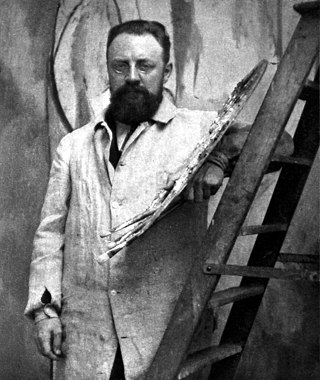
Henri Émile Benoît Matisse was a French visual artist, known for both his use of colour and his fluid and original draughtsmanship. He was a draughtsman, printmaker, and sculptor, but is known primarily as a painter.
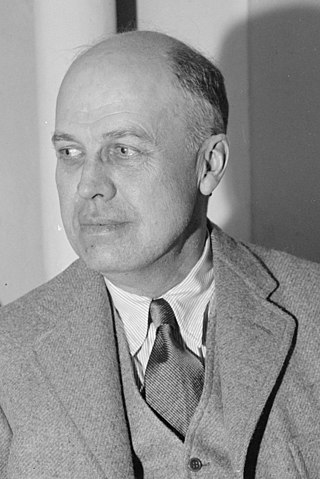
Edward Hopper was an American realist painter and printmaker. He is one of America's most renowned artists and known for his skill in capturing American life and landscapes through his art.

Suzanne Valadon was a French painter who was born Marie-Clémentine Valadon at Bessines-sur-Gartempe, Haute-Vienne, France. In 1894, Valadon became the first woman painter admitted to the Société Nationale des Beaux-Arts. She was also the mother of painter Maurice Utrillo.

Lucian Michael Freud was a British painter and draughtsman, specialising in figurative art, and is known as one of the foremost 20th-century English portraitists. He was born in Berlin, the son of Jewish architect Ernst L. Freud and the grandson of Sigmund Freud. Freud got his first name "Lucian" from his mother in memory of the ancient writer Lucian of Samosata. His family moved to England in 1933, when he was 10 years old, to escape the rise of Nazism. He became a British naturalized citizen in 1939. From 1942 to 1943 he attended Goldsmiths' College, London. He served at sea with the British Merchant Navy during the Second World War.

Paul Delvaux was a Belgian painter noted for his dream-like scenes of women, classical architecture, trains and train stations, and skeletons, often in combination. He is often considered a surrealist, although he only briefly identified with the Surrealist movement. He was influenced by the works of Giorgio de Chirico and René Magritte, but developed his own fantastical subjects and hyper-realistic styling, combining the detailed classical beauty of academic painting with the bizarre juxtapositions of surrealism.

George Clair Tooker, Jr. was an American figurative painter. His works are associated with Magic realism, Social realism, Photorealism, and Surrealism. His subjects are depicted naturally as in a photograph, but the images use flat tones, an ambiguous perspective, and alarming juxtapositions to suggest an imagined or dreamed reality. He did not agree with the association of his work with Magic realism or Surrealism, as he said, "I am after painting reality impressed on the mind so hard that it returns as a dream, but I am not after painting dreams as such, or fantasy." In 1968, he was elected to the National Academy of Design and was a member of the American Academy of Arts and Letters. Tooker was one of nine recipients of the National Medal of Arts in 2007.

Alice Neel was an American visual artist. Recognized for her paintings of friends, family, lovers, poets, artists, and strangers, Neel is considered one of the greatest American portraitists of the 20th century. Her career spanned from the 1920s to 1980s.

Les Demoiselles d'Avignon is a large oil painting created in 1907 by the Spanish artist Pablo Picasso. Part of the permanent collection of the Museum of Modern Art in New York, it portrays five nude female prostitutes in a brothel on Carrer d'Avinyó, a street in Barcelona, Spain. The figures are confrontational and not conventionally feminine, being rendered with angular and disjointed body shapes, some to a menacing degree. The far left figure exhibits facial features and dress of Egyptian or southern Asian style. The two adjacent figures are in an Iberian style of Picasso's Spain, while the two on the right have African mask-like features. Picasso said the ethnic primitivism evoked in these masks moved him to "liberate an utterly original artistic style of compelling, even savage force" leading him to add a shamanistic aspect to his project.
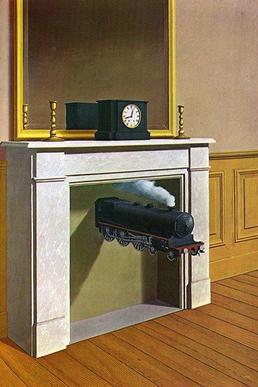
Time Transfixed is a 1938 oil on canvas painting by the Belgian surrealist René Magritte. It is part of the permanent collection of the Art Institute of Chicago and is usually on display in the museum's Modern Wing. It is not currently available for viewing.
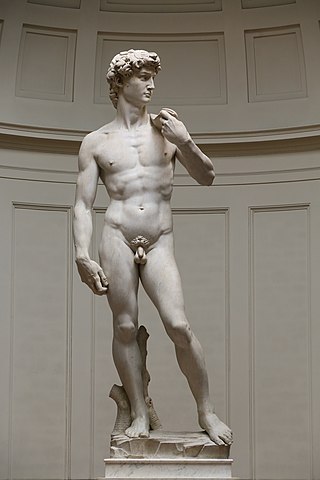
The nude, as a form of visual art that focuses on the unclothed human figure, is an enduring tradition in Western art. It was a preoccupation of Ancient Greek art, and after a semi-dormant period in the Middle Ages returned to a central position with the Renaissance. Unclothed figures often also play a part in other types of art, such as history painting, including allegorical and religious art, portraiture, or the decorative arts. From prehistory to the earliest civilizations, nude female figures were generally understood to be symbols of fertility or well-being.

Sir Peter Paul Rubens was a Flemish artist and diplomat. He is considered the most influential artist of the Flemish Baroque tradition. Rubens' highly charged compositions reference erudite aspects of classical and Christian history. His unique and immensely popular Baroque style emphasised movement, colour, and sensuality, which followed the immediate, dramatic artistic style promoted in the Counter-Reformation. Rubens was a painter producing altarpieces, portraits, landscapes, and history paintings of mythological and allegorical subjects. He was also a prolific designer of cartoons for the Flemish tapestry workshops and of frontispieces for the publishers in Antwerp.

The Great Sirens is a large 1947 painting by the Belgian painter Paul Delvaux in the collection of the Metropolitan Museum of Art, in New York.

The Road to Rome is a 1979 painting by the Belgian painter Paul Delvaux. It depicts a European town square in twilight, with a number of women, many of whom are nude or semi-nude, scattered around the scene. Three high, open doors stand upright along the walkway.

The Sacrifice of Iphigenia is a 1968 painting by the Belgian artist Paul Delvaux. Inspired by Iphigenia's sacrifice in Greek mythology, it depicts five people on a boardwalk. In the foreground are three women, two of whom might be the same person who watches herself, and behind them appears to be a scene of human sacrifice where a man overlooks a woman with an exposed breast.

The Temple is a painting made in 1949 by the Belgian artist Paul Delvaux. It depicts a classical temple building in moonlight, with the head of a statue and several modern objects in the foreground. The painting was made in Choisel outside Paris where Delvaux lived temporarily with his lover and future wife Anne-Marie "Tam" de Maertelaere. It is an oil painting with the dimensions 113.7 cm × 146 cm.
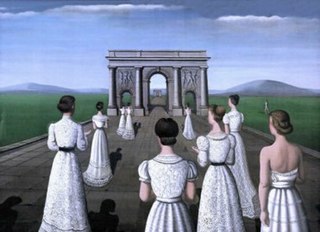
Procession in Lace is a painting executed by the Belgian artist Paul Delvaux in 1936. It shows a group of women walking toward a Roman triumphal arch. It was one of the first paintings in which Delvaux drew inspiration from Giorgio de Chirico and painted women reminiscent of mannequins, something he would continue to do throughout his career. Art historians have highlighted the painting's theatricality and described it as one of Delvaux's first major works.

Sleeping Venus is a 1944 painting by the Belgian artist Paul Delvaux. It depicts a reclining Venus surrounded by anguished people at a town square with classical buildings. It was painted in Brussels while the city was bombed during World War II and Delvaux wanted to contrast the psychological drama of the moment with the calm Venus. The painting has been in the collection of Tate in London since 1957.
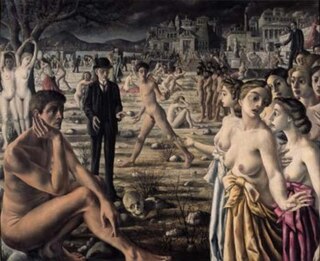
The Anxious City is a painting made by Paul Delvaux in 1940–1941. It depicts a large number of upset people, most of whom are nude or partially nude, in front of a lake and classical structures. Among the characters who stand out are a naked self-portrait of Delvaux, a man in a bowler hat and a group of bare-breasted women. The man with the bowler hat made his debut in The Anxious City and would appear in several other Delvaux paintings.




















